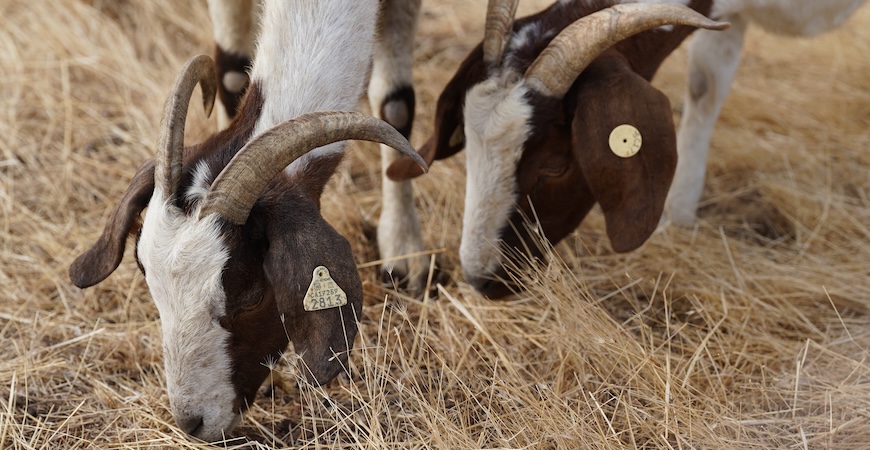
Cattle are a fairly regular sight around the UC Merced campus. They graze along the 6,500-acre Merced Vernal Pools and Grassland Reserve and the 40-acre Experimental Smart Farm, and an annual student-run spring event is even named "Cowtopia."
But cattle, as effective as they are, can't get everywhere to graze, so this summer the campus has received a visit from their smaller, more nimble colleagues: goats.
Hundreds of goats are grazing large swaths of land on the northeast side of the campus.
"We had a campus need for fire fuel reduction and weed abatement on natural lands in areas that are close to facilities and more difficult for cows to graze," said Reserve Director Joy Baccei. "We've partnered with Star Creek Stewards, a Los Banos-based, family-owned goat grazing operation, to reduce fire fuel and invasive weeds on our campus."
This is the second summer the university has contracted with Star Creek, owned by third-generation California rancher Andree Soares, for goat grazing. The goats have been working the edges of campus and will continue their efforts for a few weeks. They are penned in by temporary, solar-powered electric netted fences.
The herd on campus consists of 660 goats, all does and kids, or females and their babies, said Bianca Soares, project manager for Star Creek.
Soares said her family has raised sheep in the Central Valley for more than 100 years.
"We introduced goats into our operation about 11 years ago and have been really enthusiastic about using them as a land management tool," she said. "Sheep and goats are most common livestock used for targeted grazing services due to the ease with which they can be moved and managed in small spaces."
In addition to being able to reach locations that are difficult for cows, goats have a digestive advantage: They can consume yellow star thistle even after it has developed its characteristic sharp spines. Yellow star thistle is a highly invasive weed that cattle will avoid later in the grazing season, but goats are not deterred by the sharp spines that emerge once the plants begin flowering, Baccei said.
The goats are cheaper and better for the environment than chemicals or mechanical tools to do the same work. According to Star Creek, 400 of them can clear up to 2 acres daily, while also improving the soil.
"Rather than cutting the vegetation and leaving the dry matter behind, or spraying it, livestock remove the potential fire fuel," Soares said, "turning it into fertilizer that supports the soil."
According to the Reserve website, cattle and other grazing helps control non-native grasses, which can damage the fragile vernal pools ecosystem. Reducing the amount of tall grasses also serves to decrease wildfire fuel.
"(Grazing) doesn't emit fossil fuels like machinery would or use harsh chemicals like herbicide," Soares said. And "the goats are WAY more pleasant to watch."




 Public Information Officer
Public Information Officer

